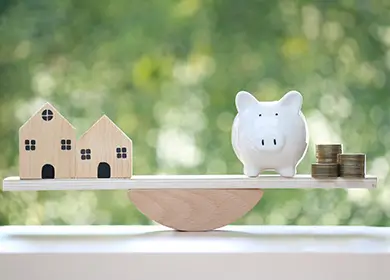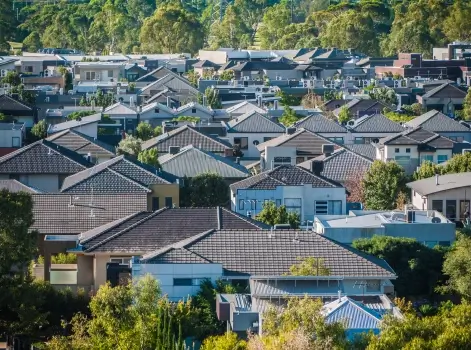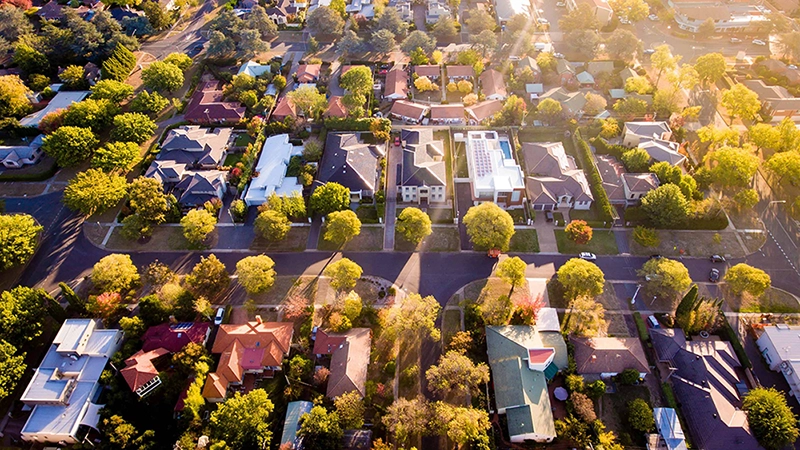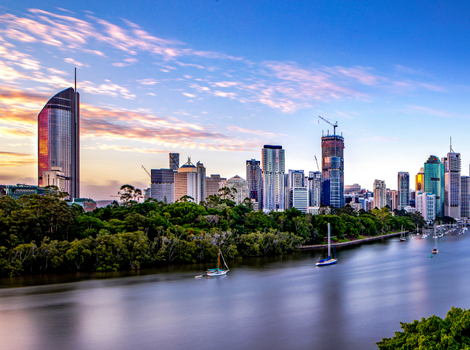Updated: 26 Dec, 2024
Every year, the National Housing Finance and Investment Corporation conducts comprehensive research into housing demand, supply and affordability in Australia. The NHFIC’s State of the Nation’s Housing Report 2022-23 was published on 3 April 2023.
The Current State Of Australia’s Housing Market
Here are notable findings from the report on the Australian housing market:
- In 2022, around 28,000 dwelling projects were delayed. Builders are now making cost allowances of up to 40% for unexpected delays, compared with the usual 20%.
- Rental growth in regional areas is now falling, after a period of high demand. Rental growth in Sydney and Melbourne outpaced that of regional NSW and VIC, suggesting that the premium for living in larger cities near employment centres might be returning.
- The average deposit to buy a home – as a percentage of annual income – has almost doubled in Sydney, from 60% to 110%, since the 1990s. Homebuyers now must save more money for a deposit, making it difficult for first-home buyers to enter the property market.
- The NHFIC anticipates that net migration will be higher than anticipated over the next few years, putting more pressure on the tight rental market.
NHFIC CEO Nathan Dal Bon said, “The rapid return of overseas migration, together with a supply pipeline constrained by decade-high construction costs and significant increases in interest rates, is exacerbating an already tight rental market.
“Housing affordability and supply are likely to remain challenging for some time, underscoring the need for a holistic approach to mitigate the housing pressures Australians are facing.”
Home Loan Experts general manager, broking, Bhisan Raj KC said, “Population growth has a slower but longer-term impact than the rate rises, so an increase in migration will mean more interest from investors and first-home buyers, keeping demand high in the market.
“The rental markets are going to be tight as well. The rents in cities are already soaring, especially in Sydney and Melbourne, compelling FHBs to want to save more for deposits and buy, rather than continuing to rent; however, there is not enough housing stock on the market to meet the demand.
“The government has advised that it will be addressing this issue, but it remains to be seen whether it can do so effectively. Also, second-home buyers might not be able to use the equity from their existing home as much now as they would like, as property prices are not growing rapidly, like they were during the pandemic.”
Projections For Australia's Housing Market 2023-33
The following are the key predictions on the property market and housing supply:
- From 2023 to 2033, over 1.8 million new household units are expected to form and occupy homes and/or purchase holiday homes, increasing the total number of households, including occupied and holiday homes to 12.6 million.
- The consecutive cash rate rises since May 22, which occurred much earlier than the RBA had previously indicated, adversely affected the housing supply. The NHFIC anticipates a net increase of about 148,500 homes (new construction minus demolished homes) in 2022-23, but that number is expected to fall to 127,500 in 2024-25. The housing supply is expected to rebound after 2025-26, due to changing macroeconomic conditions and increasing demand.
- The growing number of household units is outpacing the rate of construction of new homes. The shortfall is expected to be about 106,300 over the five years to 2027. The shortage might continue beyond 2027, with a deficit of around 79,300 homes projected from 2023 to 2033 – a greater shortfall than the NHFIC predicted a year ago.
- Australia’s ageing population is the main factor in rising lone-person households. The lone-person household is expected to become the fastest-growing type of household across Australia within five years. In a decade, the lone-person household is expected to dominate the market, followed by couples with children.
- The research anticipates a deficit of 62,300 rental apartments and medium-density dwellings, compared with new household units formed, over the five years to 2027.
- The pandemic changed how people live, as they needed more room to accommodate work-from-home arrangements. As a result, demand for bigger homes increased, decreasing the average number of people per household. The number of vacant homes available for rent or purchase declined as people sought to live independently. Data analysis shows that since mid-2021, declining household size resulted in about 341,500 additional households, equivalent to around 103,000 households in net terms, since the beginning of the pandemic.
- The NHFIC estimates that there are about 377,600 household units in Australia that need housing. Out of these, 331,000 are experiencing rental stress, meaning they are struggling to afford their rent payments, and 46,500 are homeless. Housing needs vary across the country; 208,200 households are expected to face highly acute rental stress, meaning they might be unable to afford their rent or at risk of eviction. Meanwhile, 577,400 households are anticipated to be under less acute rental pressure – they may be struggling to afford their rent but are not in immediate danger of losing their homes.









